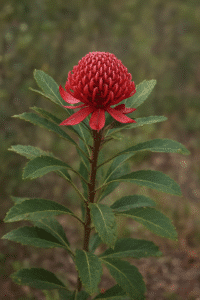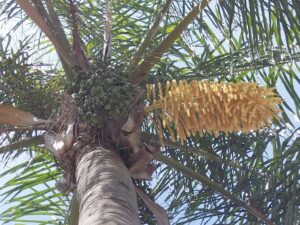Riparian woody weeds, such as Privet (small and large leaf varieties) and Camphor Laurel are widespread throughout the MidCoast area, and are a bane to many landholders. Problematic due to their high seeding rate and tendency to outcompete and inhibit native plant recruitment, we often see these vigorous shrubs growing as a monoculture along rivers and creeks, particularly in over cleared landscapes. Once the native overstorey has been removed, Privet and Camphor Laurel can monopolize the space to the detriment of native biodiversity and indeed, riparian stability. However, they are sometimes the only woody plants on the riverbank and during extreme flooding events, may protect it from mass bank erosion. This complicates the issue of riparian restoration, because sometimes, we must leave weeds in place until such time as a native replacement canopy has been established – which can take decades of careful and well executed restoration works.
What does this mean for landholders with weedy creeks and riverbanks? It means your riparian weed control works are probably not going to be linear, nor are they going to be the same for every situation or landholder. Site assessment and prioritisation of weed control works is site specific, and may be best completed under the guidance of a restoration expert. Oftentimes, it means you have to stop and check the native overstorey continuum and assess the resilience capacity of your project every few metres of river bank.
A few very general tips including:
- Work under an existing native canopy – remove emerging weeds within the canopy zone of this native overstorey
- Free up native self sown seedlings from competition with privet (and other exotics) in small areas
- Expand your riparian zone by planting on the top of the bank (into your paddock or cleared areas) with local native species suited to that zone. Nurture your plantings until they are established with routine weeding in their growing zones, and then think about expanding into adjacent woody weed patches once the natives are powering
- Take a look at the Manning River Revegetation Guide for recommendations on native species and revegetation tips for that catchment area
- Return to your weeding zones for routine follow-up weed control, and gradually expand your area of weeding as native regeneration occurs.
- Work to the pace of the bush.
Your project site may look like a patchwork quilt, but in time, the native patches may be expanded and the privet zones reduced, without compromising riverbank stability.
Natural systems are not often tidy or linear, nor should our approach to restoration works be linear or tidy. We also need to appreciate that the degradation to native ecosystems has often occurred over decades – sometimes over 100 years – of clearing, and subsequently cannot be restored in one year of weeding. Better to take the slow and steady approach, and work with the pace of the natural regeneration.
As Chris Scott likes to say, the three golden rules of restoration are:
Follow Up, Follow Up, Follow Up!
If you have a weedy creek or riverbank and need some help in planning your restoration project, perhaps the Land for Wildlife program is an option. You will receive a personalised site inspection of your property that will generate a report outlining possible strategies for restoration.
Head over to our website to learn more about the program and to register your interest in Land for Wildlife.
Article written by Isabelle Strachan, 2025




